Remarkable photos from the incredible life and career of world soccer icon Pelé
Alan Dawson
- Pelé, one of the world's most beloved sporting figures, died Thursday.
- He remains the only athlete to win three World Cups, but his fame transcended soccer.
Pelé was born on October 23, 1940 and grew up in poverty around the favelas of Tres Coracoes in the State of Minas Gerais.
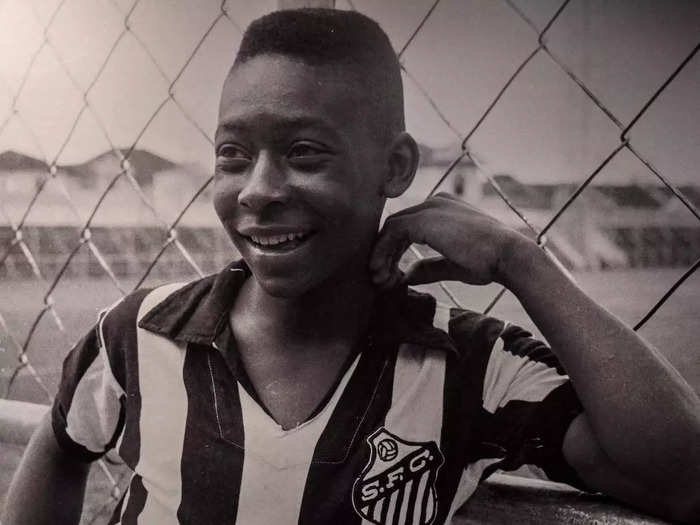
Pelé's father Joao Ramos do Nascimento, nicknamed Dondinho, was a footballer. His mother, Celeste Arantes, is still alive at 100 years old and lives in Santos.
Named after Thomas Edison, Pele's full name was Edson Arantes do Nascimento. He had many nicknames over the years, and it took him a while to warm to Pelé.
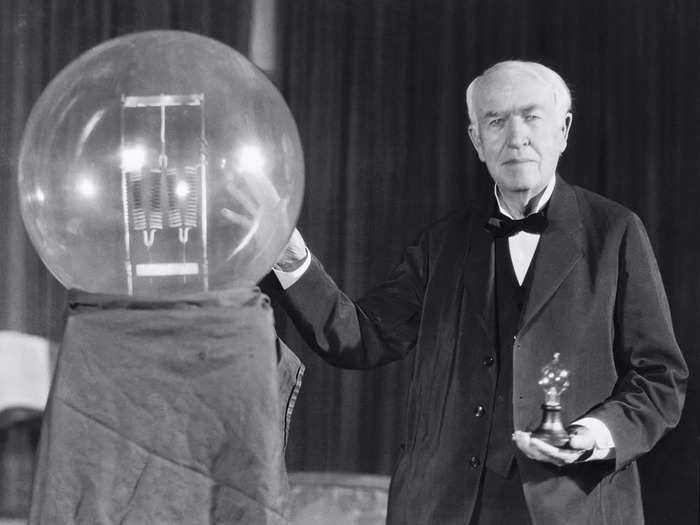
One of his first nicknames was Dico but it was never going to be the name that lasted a lifetime. When he started school, he was given the name Pelé when he mispronounced the name of Vasco de Gama's goalkeeper Bile as Pelé. The name seemed to stick even though Pelé did not like it at first because he thought it sounded like "baby talk."
"I was really proud that I was named after Thomas Edison and wanted to be called Edson," Pelé told The Guardian in 2006. Electricity had soared through his hometown around the year he was born, and being named after the incandescent light bulb inventor seemed appropriate to him.
"I thought Pelé sounded horrible. Edson," said Pele, "sounded so much more serious and important. So when someone said, 'Hey, Pelé,' I would shout back and get angry. On one occasion I punched a classmate because of it and earned a two-day suspension. Now I love the name — but back then it wound me up no end."
Sources: Daily Mail, Goal, and The Guardian.
Dondinho's love of soccer passed down to his son, but a young Pelé couldn't afford a football. Instead, he stuffed a sock with newspapers, bound it with string, and kicked that around the streets in which he grew up.
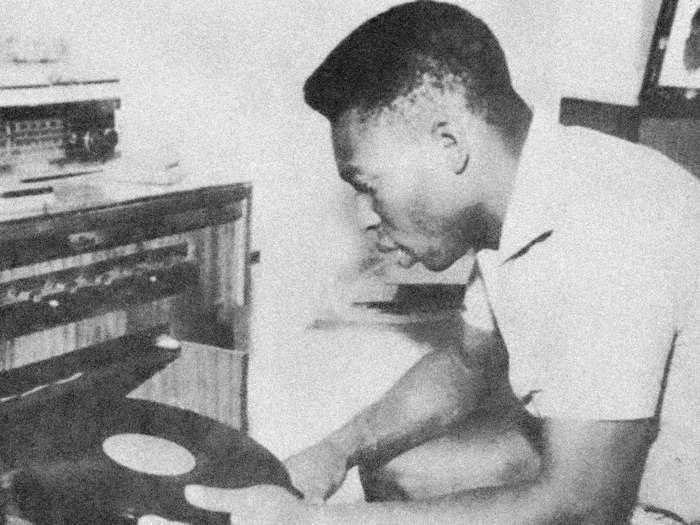
Pelé shined shoes and sold peanuts outside cinemas so that he could raise enough money to buy an actual football. However, he'd often kick barefooted as he couldn't afford boots. His friends, who were in a similar position, formed a team called 'The Shoeless Ones.' Barefoot games in Brazil became known as 'Pelada' — a nod to Pelé.
Sources: Daily Mail, Biography, Goal.
Pelé was scoring goals for Santos against grown adults when he was only 15 years old. He scored an overall total that exceeded 1,200 by the time his career was done, according to FIFA.
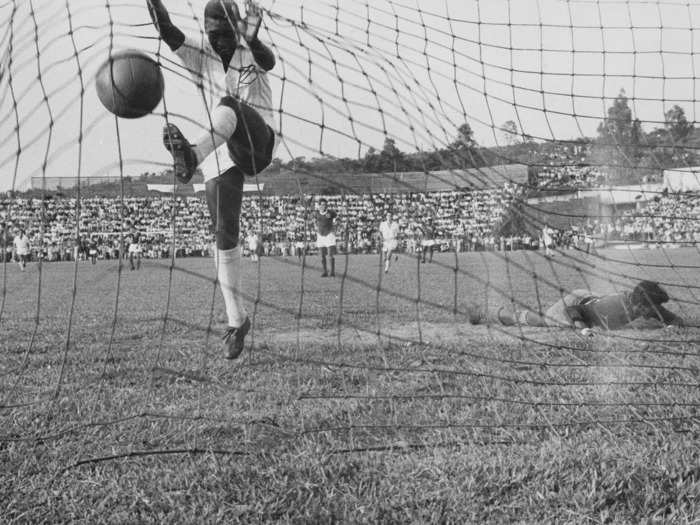
Waldemar de Brito, Pelé's youth team coach, is credited with discovering his talent and encouraged Santos to sign him at 15 years old. de Brito's told those who would listen that Pelé would become "the greatest footballer in the world." It proved to be prescient praise as Pelé scored four goals on his league debut for Santos against FC Corinthians on September 7, 1956 — one month before his 16th birthday.
Pelé became the youngest person to play at the FIFA World Cup when he competed at the 1958 tournament in Sweden at age 17.
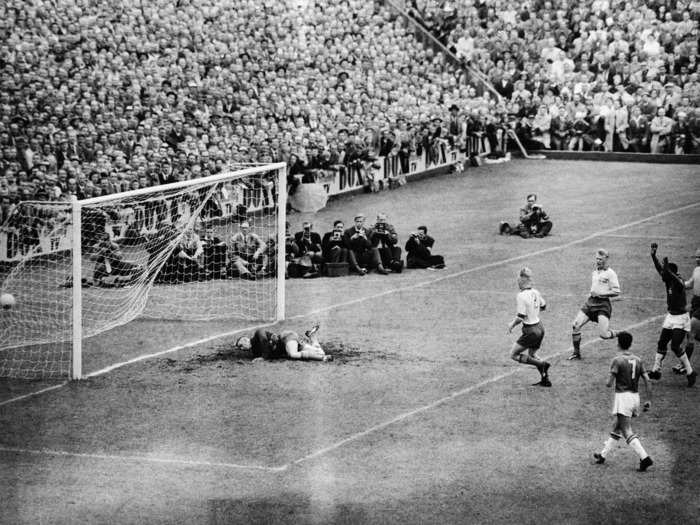
Brazil was not considered a major world player at the time, as Pelé told CNN in 2016 that people considered Uruguay and Argentina as the juggernauts from South America.
Pelé led Brazil to the title by scoring in the quarterfinal, netting a hat trick in the semis, before returning two goals in a 5-2 thriller against host nation Sweden in the final.
According to reports, older players had to revive Pelé as he passed out at the final whistle.
The 1958 World Cup announced Brazil as a global soccer power — and its young star Pelé became an overnight celebrity.
"When we won the World Cup, everybody knew about Brazil," Pele said. "I think this was the most important thing I gave to my country, because we were well-known after that World Cup."
Sources: CNN and Daily Mail.
Despite his World Cup heroics, Pelé was selected to join the army and could not get out of it as he was the most famous teenager in his country.

Pele reportedly pleaded with the president of his soccer club Santos to get him out of his mandatory service by feigning injury. "Are you mad?" he was told. "The whole country knows you are a shining example of health.… If there's any 18-year-old Brazilian who has to do military service, then it's you."
Sources: Players Tribune and CNN.
Despite injury, Pelé played two games at the 1962 World Cup and won his second championship — a successful defense for the 'Selecao'.
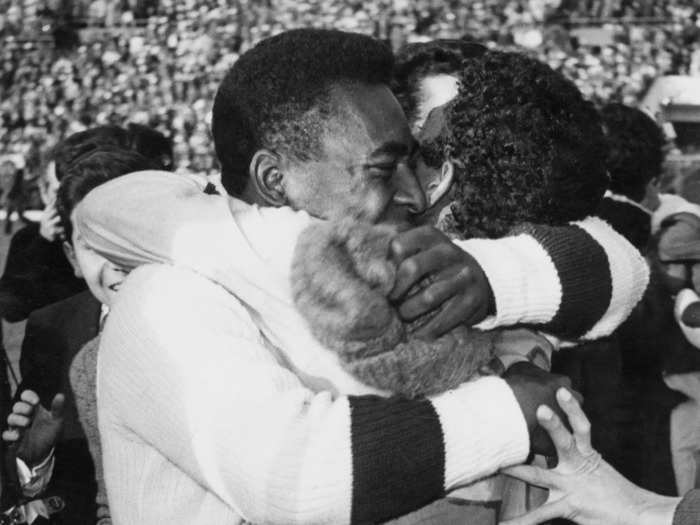
Later, Pelé married Rosemeri dos Reis Cholby, in 1966, his first of what would be three marriages.
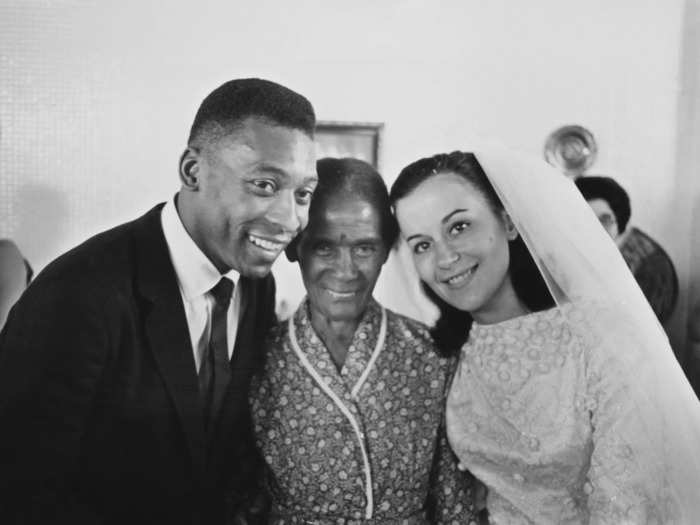
Pelé and Rosemeri spent their honeymoon in Germany and were treated like a celebrity couple by local media in Europe.
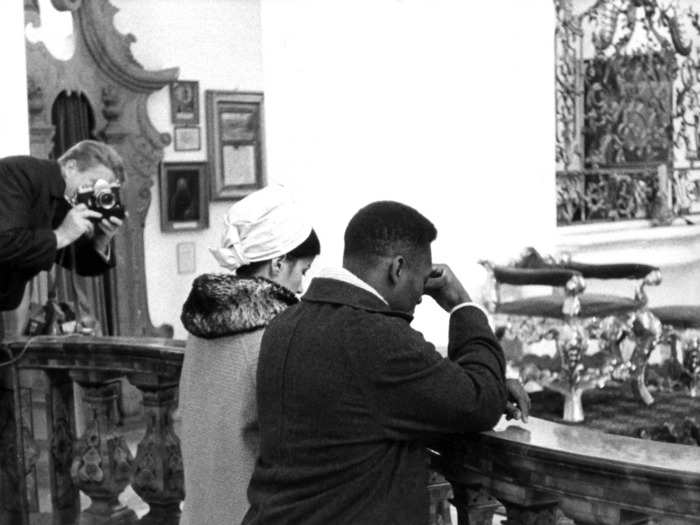
Pele and Rosemeri had three children together, including daughter Kelly Cristina, pictured below.
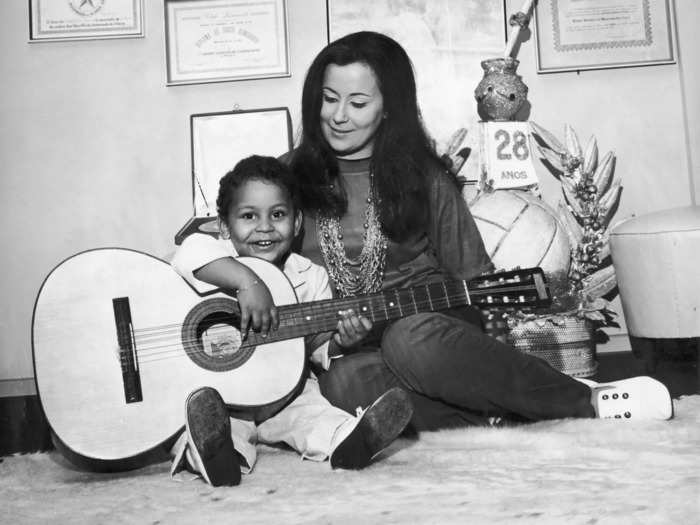
Pelé and Rosemeri's marriage ended in 1982.
Another of Pelé's children with Rosemeri, a son called Edson Cholbi Nascimento, aka Edinho, was sentenced in 2014 to 33 years in prison for laundering money for drug traffickers.
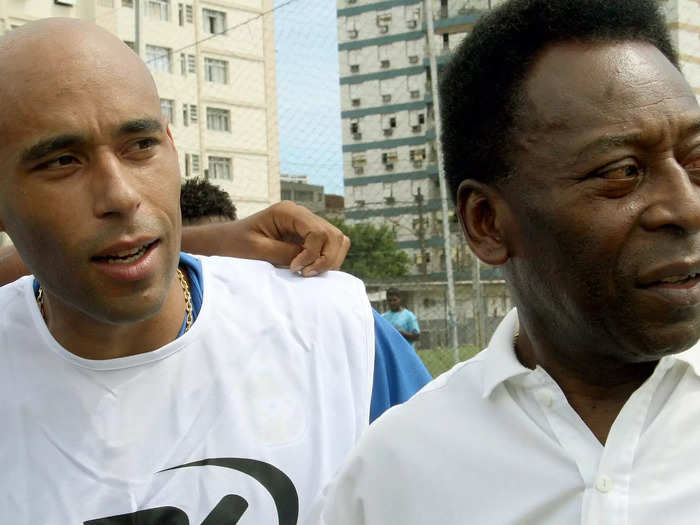
At the time of Edinho's arrest, Pelé reportedly said there was "not a shred of evidence" to convict him. Pelé visited his son in jail numerous times.
Sources: Getty Images and Daily Mail.
Pelé scored his 1,000th goal in November 19, 1969. Hundreds of fans raced onto the pitch and it took half an hour for the match to resume. November 19 later became known as "Pelé Day" in Santos.
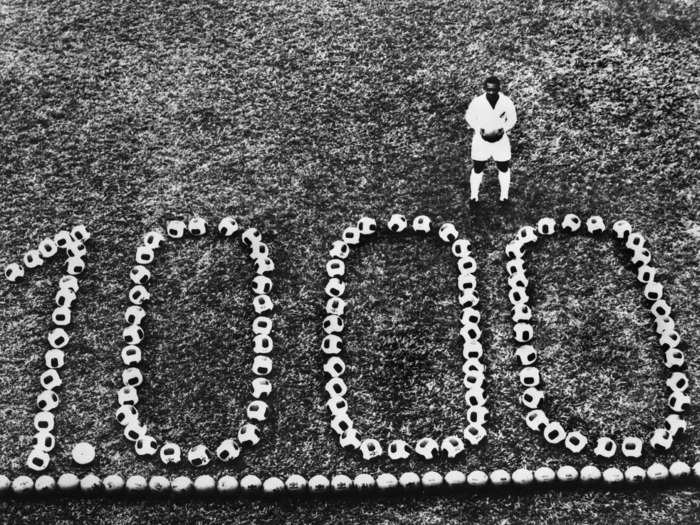
One of Pele's best performances came at the 1970 World Cup.
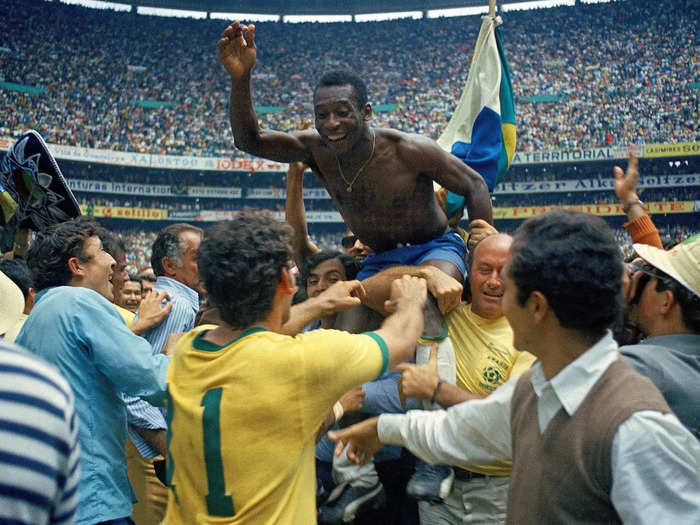
Pelé scored four goals en route to the 1970 World Cup title, and provided a "blind pass" that helped Carlos Alberto score a decisive goal against Italy in the final — one of the best goals in tournament history.
Watch it right here:
"We won the World Cup, and I think in my life in sport," that was the pinnacle, "no doubt," said Pelé.
Sources: CNN.
Pelé played most of his club-level career for Santos, but he joined New York Cosmos in 1975 and helped elevate the game in the States.
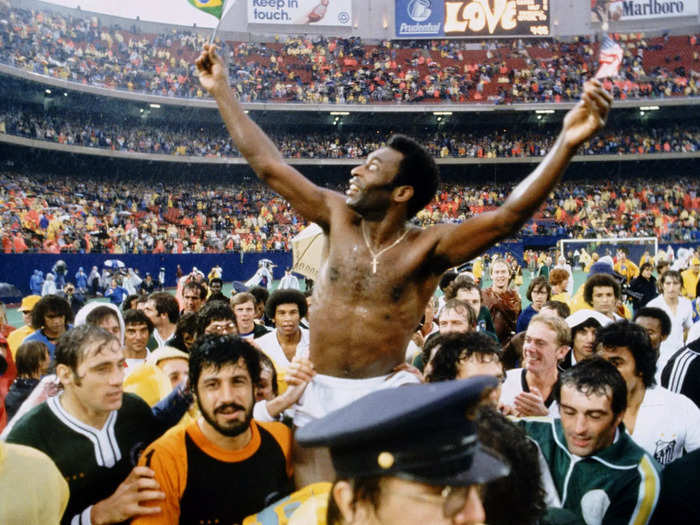
Mass hysteria followed Pelé's arrival to join the New York Cosmos in 1975, as fans mobbed the player in Boston, leaving him injured and in need of a stretcher.
Cosmos general manager Clive Toye was a key figure in bringing Pelé to the US. Toye reportedly told the soccer star that if he joined a club in Italy or Spain, all he could do was "win a championship." However, if he came to the States, he could "win a country."
Sure enough, Toye was right. Pelé's two-year spell in the US boosted average attendance figures across the entire North American Soccer League from 7,597 in 1975 to 13,584 in 1977.
Pelé's deal with the Cosmos was for $7 million and made him the best-paid team athlete in the world — a far cry from the $10 per month contract he had with Santos when he was 15 years old.
Sources: Daily Mail, Biography, and Goal.
Pelé's net worth grew to approximately $100 million, but he made most of his money off the soccer field, signing endorsement deals with Coca-Cola, Subway, and Viagra.
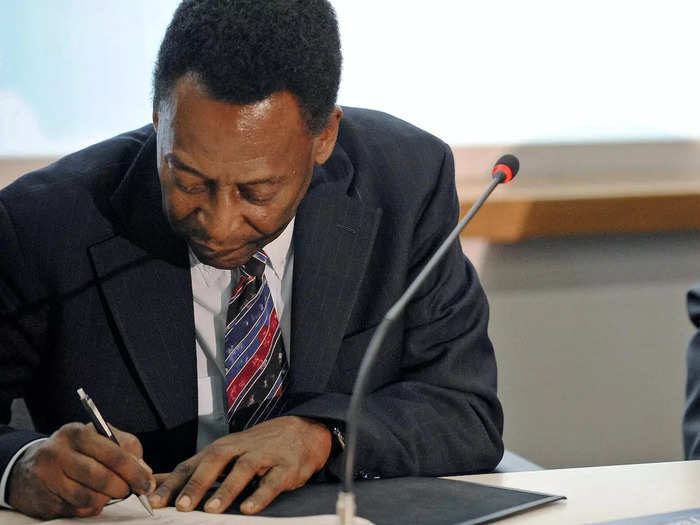
Pelé received a salary of $150,000 per year during his playing days, but his celebrity was so large that he banked far more money through commercial deals. He endorsed Visa, MasterCard, and had his own soccer video game on an early console — the Atari.
Ahead of a 1970 World Cup soccer match, Pelé told the referee that he had to tie his shoelaces. As the cameras zoomed in on Pele prior to the whistle, it was clear he was wearing Puma's boots and the company's sales subsequently soared.
Sources: The U.S. Sun, Daily Mail, Goal.
Further proof of Pelé's transcendence was his appearance in smash-hit movies like "Escape to Victory," in which he starred alongside Sylvester Stallone.
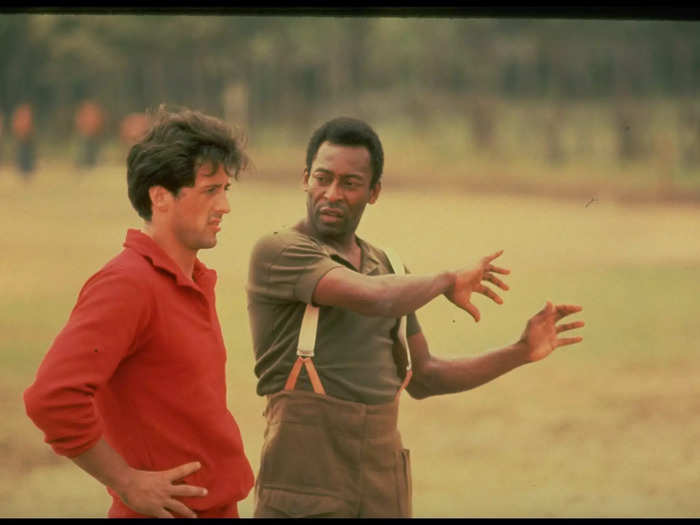
The fictional 1981 film tells the story of Allied prisoners in World War II that play an exhibition soccer match against a German team. Pelé and other soccer icons, like Bobby Moore, starred alongside Stallone and Michael Caine.
Pelé won admiration from all around the world before and after his retirement in 1977. "Pelé was the most complete player I've ever seen," Bobby Moore said of his rival. "He had everything."
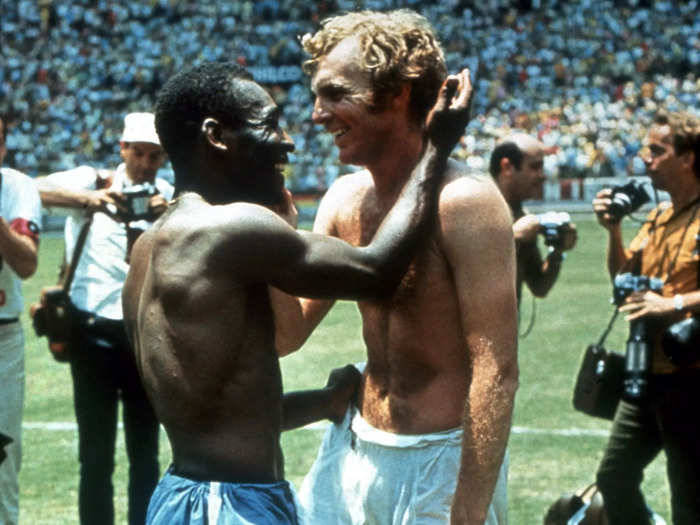
Moore said Pelé had: "Two good feet, [was] Magic in the air, quick, powerful, could beat people with skill, and could outrun people. Only five feet and eight inches tall, yet he seemed a giant of an athlete on the pitch. Perfect balance and impossible vision. He was the greatest because he could do anything and everything on a football pitch. I remember Saldanha the coach being asked by a Brazilian journalist who was the best goalkeeper in his squad. He said Pelé. The man could play in any position."
Source: Four Four Two.
Muhammad Ali, who attended Pelé's final match in 1977, was also blown away by soccer's greatest.
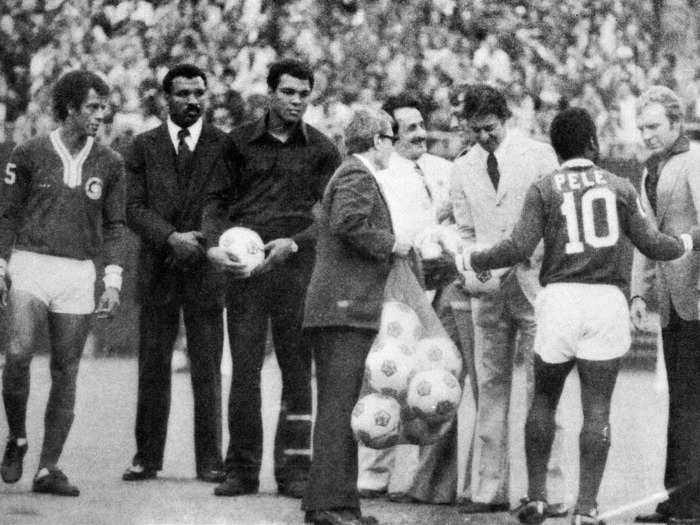
Long after Pelé's retirement, Cristiano Ronaldo — a modern-day sports superstar — said: "Pelé is the greatest player in football history, and there will only be one Pelé."
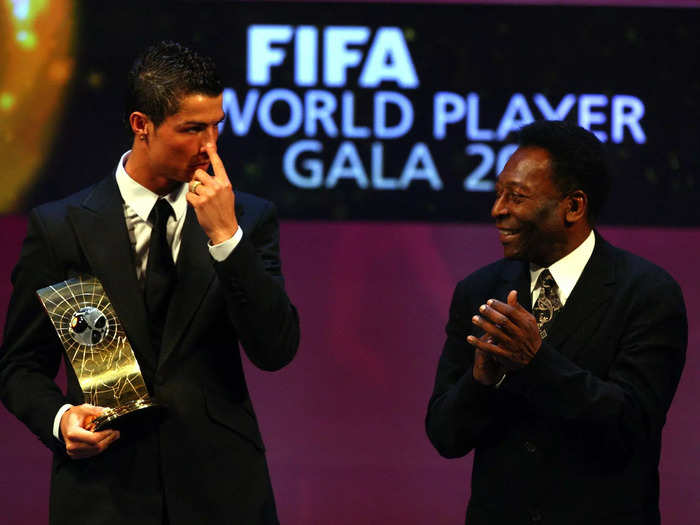
Source: Four Four Two.
Pelé even inspired the artist Andy Warhol, who said: "Pelé was one of the few who contradicted my theory: Instead of 15 minutes of fame, he will have 15 centuries."
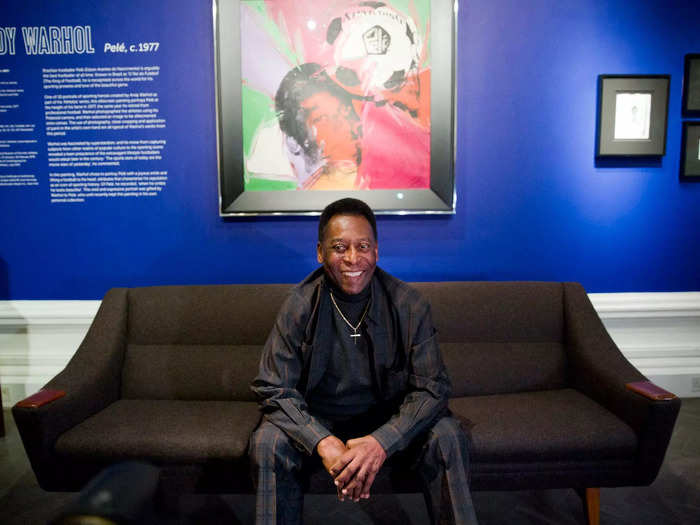
Source: Daily Mail.
In 1993, Pelé broke governmental barriers when he was named Minister of Sports for Brazil. It was a post that had never been occupied by a Black man before, according to Yahoo.
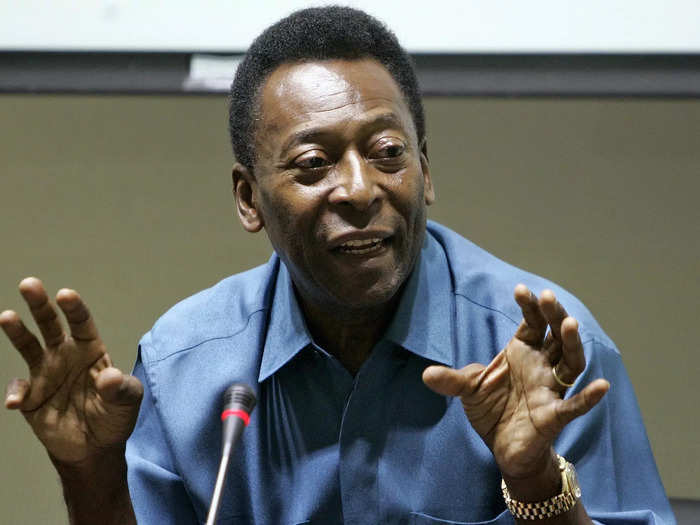
Source: Yahoo.
The next year, he married his second wife, Assiria Lemos Seixas, a psychologist and gospel singer. They had twins — Joshua and Celeste — two years later.
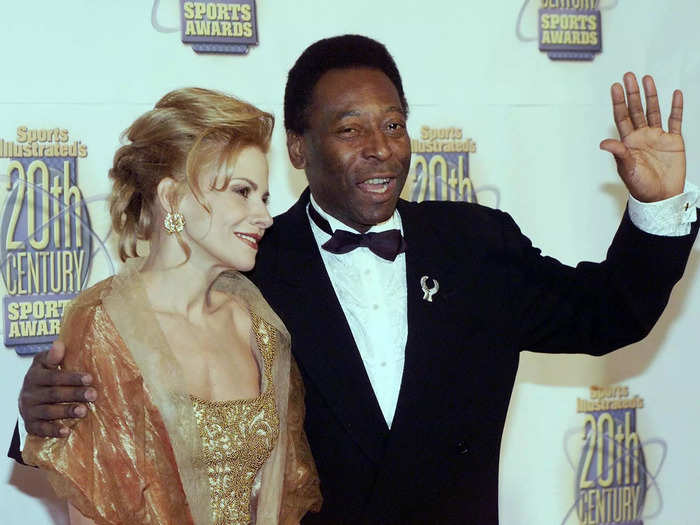
Pelé used his celebrity status for good and advocated for numerous causes. He campaigned for poverty reduction, environmental protection, and raised millions of dollars for charities that helped children, like Great Ormond Street and Harlem Street Soccer. He was UNESCO's champion for sport from 1994.

Sources: Football History, Goal, and UNESCO.
Away from soccer, Pelé had a love for designer clothes and flashy cars.
He loved to drive a Volkswagen Beetle — a classic in today's automotive market.
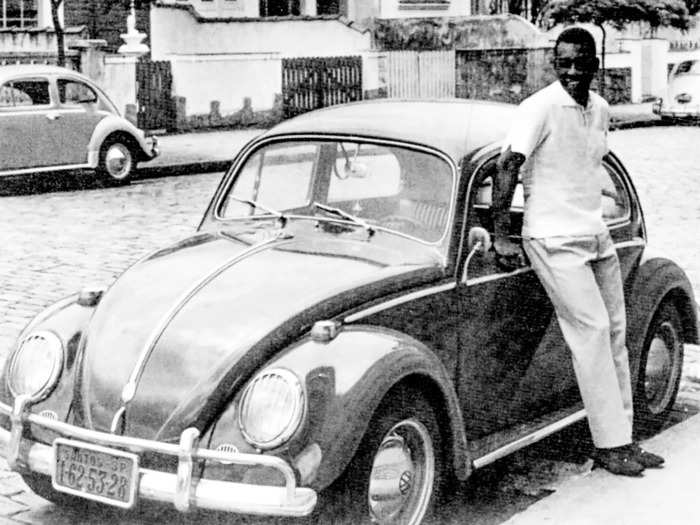
Pelé even waved the checkered flag at a 2002 F1 race that Michael Schumacher won. Pelé championed his nation's racers, like the late Ayrton Senna and Felipe Massa.
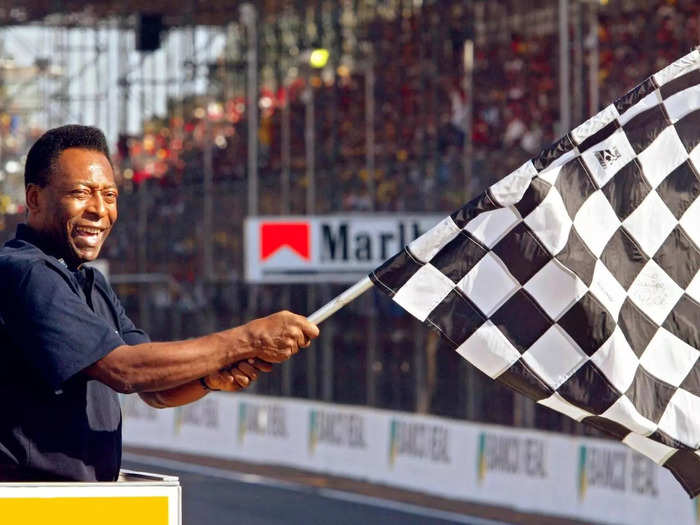
An avid guitar player, Pelé fancied himself as a musician. "If I wasn't a footballer I think I would compose music and sing," he once said.
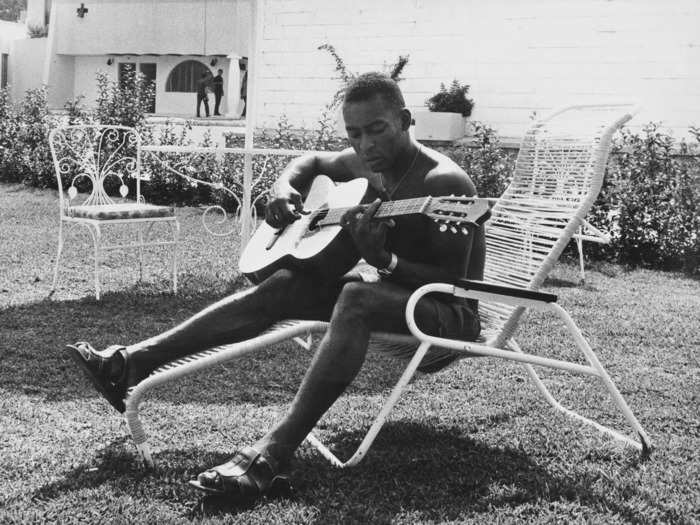
Pelé was friends with Tom Jobim, one of the creators of Brazil's wildly popular bossa nova movement. Jobim wrote music with Pelé in mind, calling one track "Radames and Pelé."
Pelé released his own music. One track was called "Listen to the Old Man." He would even sing to his teammates during his playing days.
Source: CNN and Daily Mail.
Pelé was named Athlete of the Century by the IOC in 1999 for his exploits in soccer from the 1950s to the 1970s.
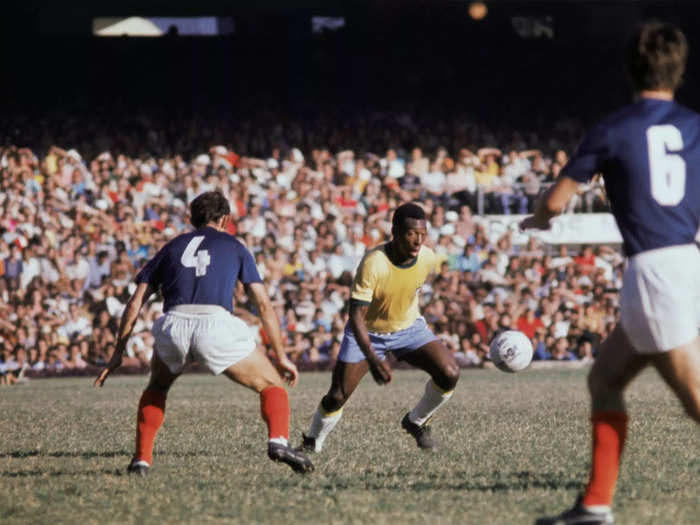
The International Olympic Committee bestowed the honor of him, despite the fact that Pelé never played at the Olympic Games.
Source: ESPN
Pelé is credited with breaking the taboo surrounding erectile dysfunction because of his ambassador role for anti-impotency awareness, and Pfizer's drug Viagra.
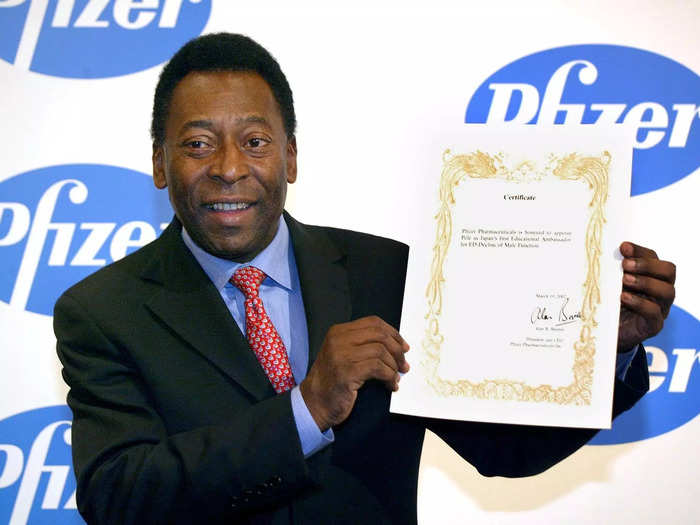
Sources: Daily Mail and Goal.
Pelé has a ranking and potential of 98 (out of 100) on the popular FIFA video game series. In the latest edition of the game, FIFA 23, it is the highest rank Icon card in the entire game.
Pelé held court with at least five US presidents and kicked a football around with Gerald Ford in 1975 …
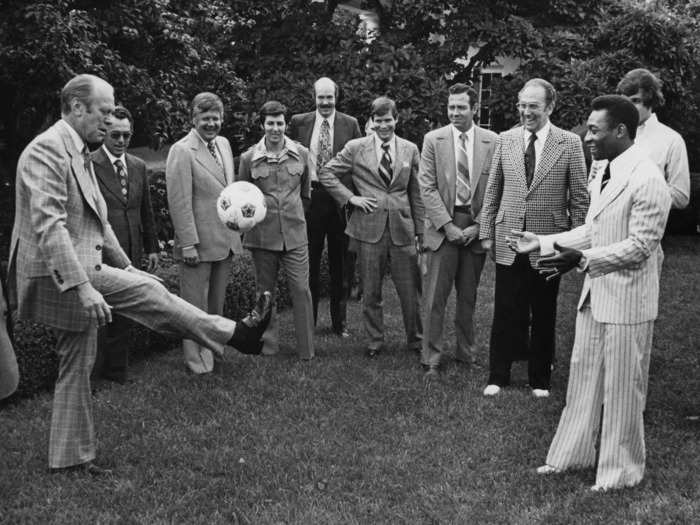
… talked soccer with Jimmy Carter later that decade …
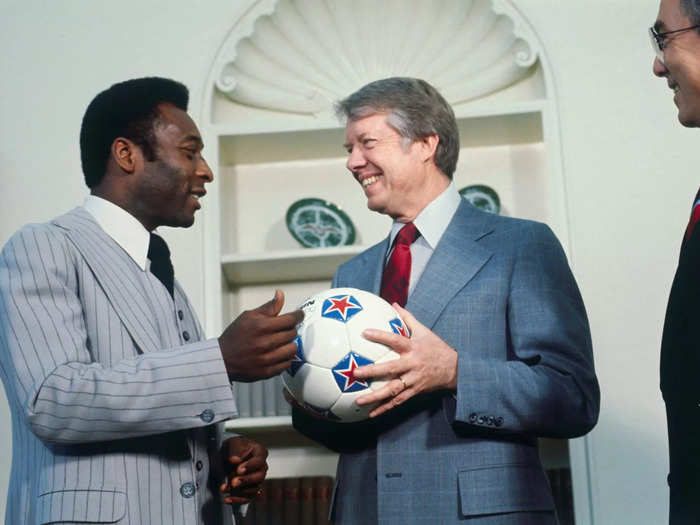
… was back on the White House lawns in 1982, this time with Ronald Reagan …
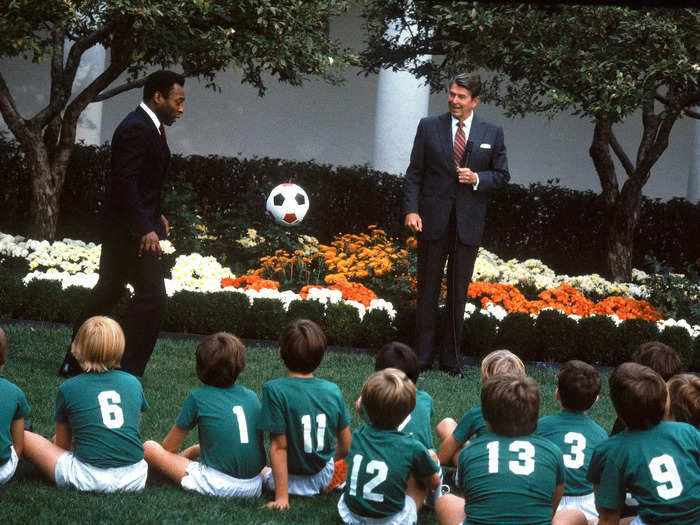
… did the same with Bill Clinton in the 1990s …
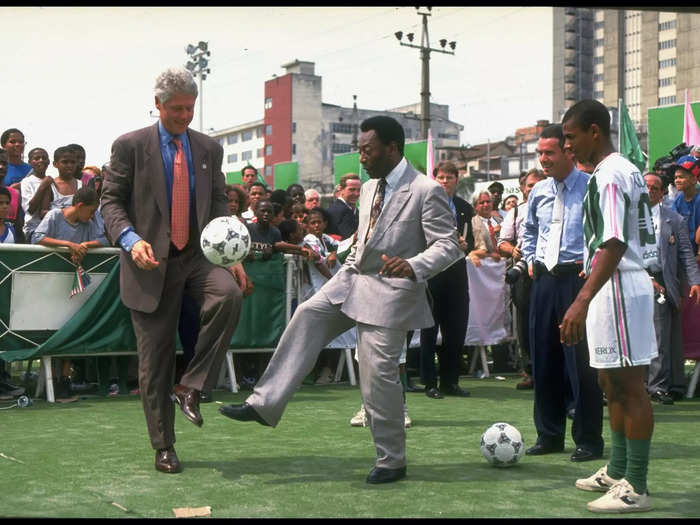
… and frequently met, and praised, Barack Obama.
Obama "represents an individual's ability to change the world through big ideas," Pelé wrote in an Instagram post. "I admire you deeply, Barack. People like you make the world better."
Source: Instagram.
Pelé met numerous other world leaders and even developed a strong bond with Nelson Mandela.
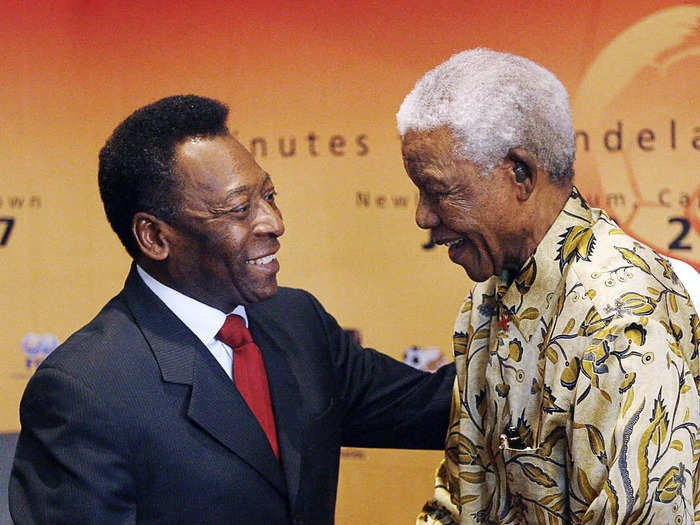
"To watch him play was to watch the delight of a child, combined with the extraordinary grace of a man in full," Mandela once said of Pelé.
Following Mandela's death in 2013, Pelé tweeted: "He was my hero, my friend, and also a companion to me in our fight for the people and for world peace."
Sources: Four Four Two and Twitter.
He also met Pope Benedict XVI in 2005 …
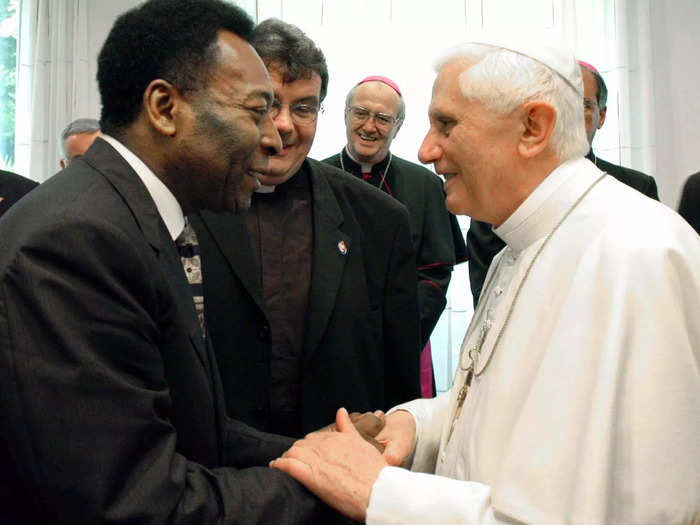
… and Russia President Vladimir Putin in 2017.
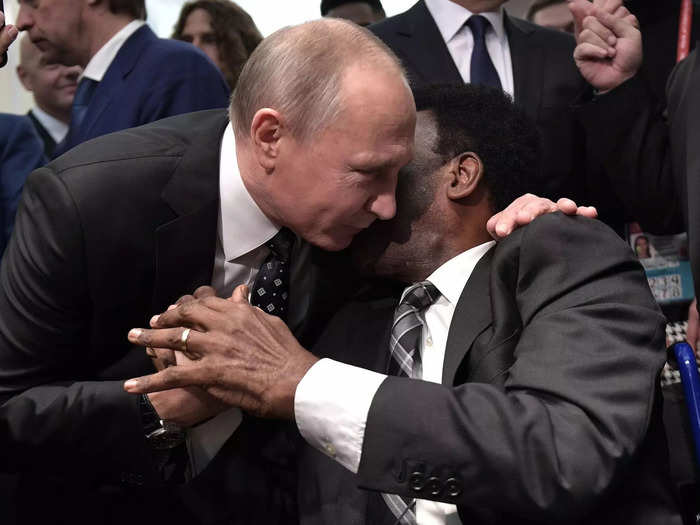
In 2016, Pelé, at 75, married his third wife, Marcia Aoki, a Japanese-Brazilian importer of medical equipment.
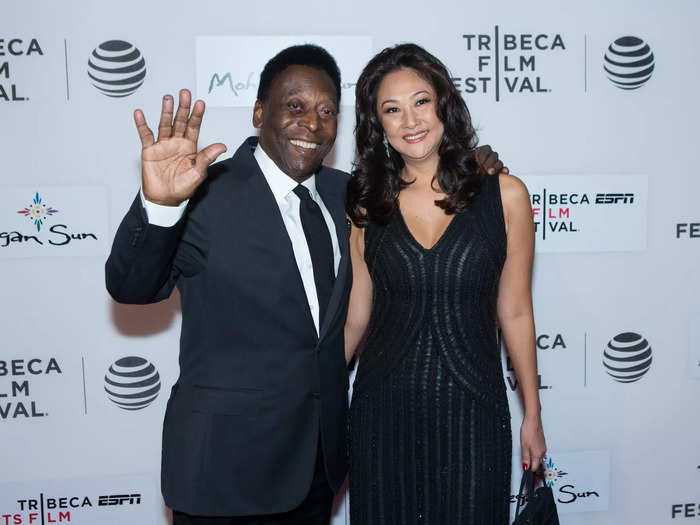
He had seven children in total: five between his first two wives and two outside of his marriages.
Source: Daily Mail.
Pelé's health declined in his latter years. In 2021 he had a tumor removed from his colon.
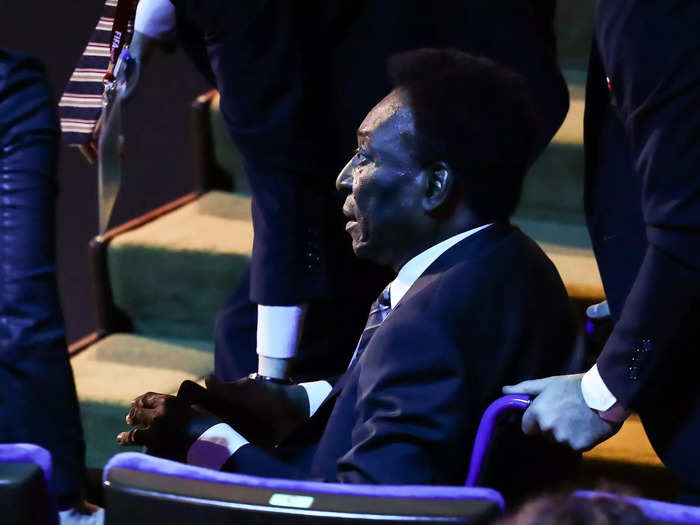
Pelé died on December 29, 2022 "due to multiple organ failures resulting from the progression of colon cancer associated with his previous medical condition," according to a statement from the hospital that was treating him.
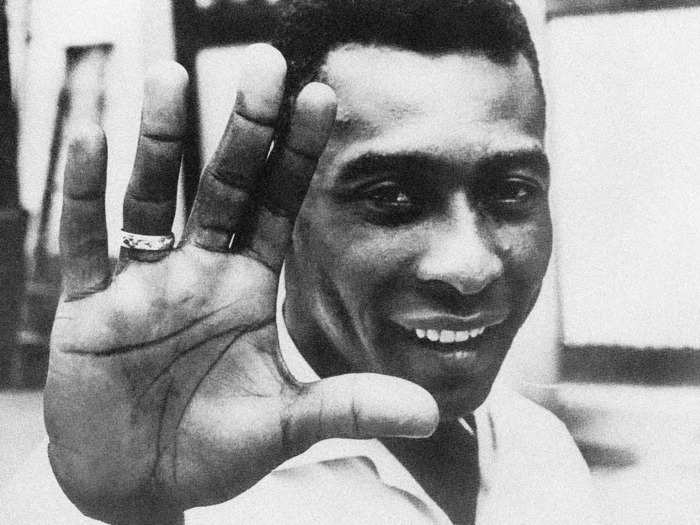
Though it is easy to find praise for Pelé, perhaps one of the best comments on his abilities came from Tarcisio Burgnich — the Italian defender tasked with marking Pelé in the 1970 World Cup final.
"I told myself before the game, he's made of skin and bones just like everyone else," Burgnich said at the time. "But I was wrong."
Popular Right Now
Popular Keywords
Advertisement